Introduction
By 1944 medicine had made great advances and this was quickly applied to the
battlefield greatly increasing the chances of survival and recovery of those
wounded. By the end of 1944 penicillin was readily available to all wounded
troops and saved many lives. Also of importance was the supply of fresh
batches of blood plasma (blood without red corpuscles) used to replace the
fluid part of the blood that seeps away through the walls of the capillaries
when a man is wounded.
It is interesting to note that statistics showed that some 75% of all wounds
were caused by mortar, grenade, aerial bombing or shelling. Only 10% were
caused by bullet or anti-tank shell and a further 10% caused by landmines or
booby traps. However, if one also takes into account those who later died of
their wounds then the figure for gun shot wounds rises to 25%.
The body location of injuries showed that the whole body was equally at
risk. The effects of explosive shells were fairly random, whilst even
small-arms fire relied on indiscriminate saturation rather than
marksmanship.
During 1944-45 the 1st Battalion Worcestershire Regiment suffered 52
officers wounded or sick of which 4 died of their wounds or sickness shortly
afterwards; 11 of the wounded officers returned to combat after treatment
and of these 3 were wounded a second time. Also 2 of the returned officers
later died in action. Of the other ranks there were some 700 wounded or sick
which included 10 warrant officers (in July 1944 alone there were 133 other
ranks wounded).

Military Field Hospital in Normandy
With in the 43rd Wessex Division from 24th
June 1944 to 5th May 1945 there were a total number of 481 officers and 7811
other ranks wounded.
Dealing with the wounded
In N. W. Europe 1944-45, R.A.M.C. units were present at all levels, every
infantry battalion had a Medical Officer (usually with the rank of Captain),
a medical orderly, a 15-cwt truck in which to carry their equipment, plus an
N.C.O. (Sergeant) and about 20 infantry men, trained as stretcher bearers.
All soldiers were trained in simple first aid and the use of morphine, plus
they carried a First Field Dressing for immediate use in the field. A first
field dressing, a small bandage pack, was carried by all ranks in a special
pocket of the right leg of the battle dress trousers. In addition, a shell
dressing, which was larger, was usually carried under the camouflage net
that covered the steel helmet. Some vehicles also carried a boxed medical
kit.
The wounded were collected by stretcher
bearers and taken by jeep or carrier to the Regimental Aid Post (R.A.P.)
where the Medical Officer (M.O.) and his orderly would give some immediate
treatment. Depending on the severity of the wound, the Field Ambulance
Personnel would evacuate the casualties to the Advanced Dressing Station (A.D.S)
where they would then be collected by motor ambulance and taken to the Main
Dressing Station (M.D.S.). The H.Q. of the Field Ambulance Company formed
the Main Dressing Station (M.D.S.), where casualties and their records were
taken, anti-tetanus serum is injected and urgent treatment given. After
treatment wounded were then transported to a Casualty Clearing Station
(C.C.S.).
A Walking Wounded Collecting Post (W.W.C.P.), usually set up about 2 to 5
miles from the frontline, to relieve pressure on the A.D.S during battle.
Wounded are then collected by lorry and taken to the Casualty Clearing
Station (C.C.S.).

House used by the 1st Battalion as R.A.P.
Canteloup crossroads (1st August 1944)
From the C.C.S. casualties are then
transported by Motor Ambulance Convoy (M.A.C.), a Corps Unit, and taken to a
General Field Hospital for further treatment or surgical operation.
After treatment at the General Field Hospital the wounded were either moved
to a Rest Station or a Convalescent Depot before returning to their unit or
the more seriously wounded were evacuated back to U.K. by either ship or
plane.
The rate of survival of the seriously wounded depended on how quickly
professional medical treatment was received. In Normandy this was usually
just one hour. Equally important were the three medical innovations of the
time: penicillin and sulphanilamide (sulpha) to combat infection, and blood
transfusion (plasma) to reduce shook.


1st Battalion Worcestershire medical jeeps
and stretcher bearers
Ahead is an ambulance of 213 Field Ambulance

Captain R. Duff-Chalmers (R.A.M.C.)

Sergt. Hodgetts

Private
Bill Edwardes
The rest of the platoon was made up of stretcher bearers from which 2 were allocated to each company; they operated a rotate so each spent time out of the line at the R.A.P. The total battalion medical platoon strength was about 30 men.
Early in the campaign Sergeant Hodgetts was badly wounded in the leg at Mouen by enemy mortar fire. He was evacuated and later had to have his leg amputated.
On the 9th April 1945, Captain Duff-Chalmers was also wounded in the leg by a splinter due to enemy shelling while he was setting up his R.A.P. in a house in the town square at Haselunne, and was replaced by Captain J. McKendrick (R.A.M.C.).
Bill Edwardes was a young stretcher bearer, not yet 17 when he joined the Battalion. He recalls: “As a 9 stone weakling I found carrying of a stretcher by just two men, extremely difficult, and would stagger round like a drunkard for a few moments, after putting the stretcher down!”
Below you will find the stories of some of the men of the 1st Battalion Worcestershire Regiment who were wounded in N.W. Europe during WW2.
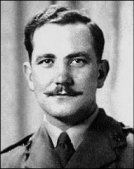 2nd
Lieut. George Alfred Kendall (295672)
2nd
Lieut. George Alfred Kendall (295672)
At the start or World War 2, George Alfred Kendall was already serving with
the Auxiliary Fire Service. Early in 1943 he was called up for army service as a regular soldier.
After training he joined the 8th Battalion
Worcestershire Regiment who were at camp at Market Rasen, Lincolnshire, and
was soon promoted to Sergeant.
In October 1943, he received a commissioned from the ranks as a 2nd
Lieutenant and was drafted in to the 1st Battalion Worcestershire Regiment
who were at Maresfield Camp in Sussex and joined 'D' Company as commander of
18 Platoon. In June 1944 he was appointed Pioneer Officer and landed in
Normandy with Support Company on the 25th June 1944.
Just 3 days after landing he was wounded by German mortar fire near Cheux.
Click here or his adjacent photo to
read his story
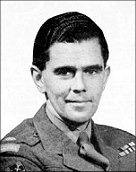 Lieut.
Peter Hall (148942)
Lieut.
Peter Hall (148942)
In Normandy, Peter Hall was a platoon commander with ‘C’ Company and was
unlucky to be wounded in the arm and shoulder during the 1st Battalions first
action at Mouen, France, in June 1944. After recovering in England he
returned to the 1st Battalion in France in September 1944.
Peter was wounded for a second time on the 16th April 1945 as a result of a
land mine which blew up a carrier in front of him, this time an eye wound.
In the later stages of the war he was recommended for the immediate award of
both the M.C. (Military Cross) and the D.S.O. (Distinguished Service Order)
and was presented with the latter by Field Marshal Montgomery at a Church in
Celle, Germany shortly after the end of the war.
Click here or his adjacent photo to
read his story
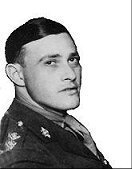 Lieut. Freddie Henry (276393)
Lieut. Freddie Henry (276393)
Gilbert Frederick Powlett Henry, known as was commissioned in to the Royal Fusilier
Regiment on the 15th May 1943. Early in 1944 he was posted to the 1st
Battalion Worcestershire Regiment as a Platoon Commander in ‘B’ Company. Know
by his men and fellow officers as “Freddie” he soon made a impression on his men.
He was a courageous soldiers and always lead his men from the front. In
August 1944 he was badly wounded by machine gun bullets while attacking and
capturing a German machine gun post. After recovering from his wounds
Freddie returned back to the 1st Battalion in Germany at the beginning of
1946.
Click here or his adjacent photo to
read his story
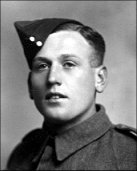 Sergeant
Albert Greatrix (5244906)
Sergeant
Albert Greatrix (5244906)
At the beginning of 1943 Albert Greatrix was a corporal with 14 platoon.
He was a keen sportman and was a member of ‘C’ Company football team. By
1944 he had moved to 13 platoon and promoted to the rank of Sergeant. He landed
with the 1st Battalion in Normandy during June 1944.
On the 9th August 1944, ‘C’ Company
were given the task of clearing the enemy on the road to Le Plessis
Grimoult in the area of La Varinière and was awarded the Military Medal.
A week later he badly wounded by German with a machine gun (Spandau), but
managed to crawl back to the safety of his Company and was eventually to be
taken to a Field Hospital, before been flown back to England.
Click here or his adjacent photo to
read his story
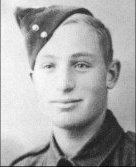 Private
Alfred J. Kings (14585242)
Private
Alfred J. Kings (14585242)
After doing his basic training at Norton Barracks (23rd I.T.C) he was posted
in August, 1943 to the newly formed 1st Battalion Worcestershire Regiment,
stationed at Wanstead. The Battalion at that time was part of the 33rd
Guards Brigade. When the battalion joined the 43rd (Wessex) Division he took up the
role of Bren Gunner. He landed with the 1st Battalion in Normandy in June 1944.
During the advance towards Arnhem he was wounded in the foot from machine
gun fire during the battle for the village of Elst, Holland in September
1944.
Click here or his adjacent photo to
read his story
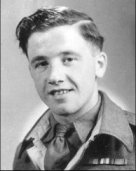 Private
Tommy Dutton (14577577)
Private
Tommy Dutton (14577577)
Tommy Dutton was called up for army service in 1943 received his initial
training at the Infantry Training Centre (I.T.C.) at Norton Barracks. During
his training he broke a wrist had had to receive hospital treatment. On his
return to the Depot at Norton Barracks he was posted to Market Rasen,
Lincolnshire. In March 1944 he was selected to join the 1st Battalion who
were than at Hythe traning and waiting for 'D' Day and the Normandy
landings. He
joined 17 Platoon of ‘D’ Company.
Tommy saw action throughout
Normandy but was later wounded at Vernonnet during the Seine crossing at the
end of August 1944.
Click here or his adjacent photo to
read his story
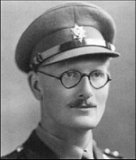 Lieut.
Peter Wade (307868)
Lieut.
Peter Wade (307868)
Frederick Peter Wade originally joined the Queens Westminster Rifles T.A. in
1939. He was commissioned in to the Worcestershire Regiment on the 24th
January 1944 as a 2/Lieut. On the end of August 1944 he was posted with
officer reinforcements to the 1st Battalion.
Peter was wounded twice in
action. The first time at Rischden in November 1944 where he was wounded by
shrapnel. He returned to the battalion at the end of January 1945, this time
to ‘A’ Company, only to be wounded again in March 1945 during the Autobahn
attack at Vehlingen.
Click here or his adjacent photo to
read his story
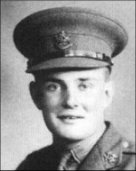 Major
Bryan Elder (130065)
Major
Bryan Elder (130065)
At the start of the war Bryan Elder initially found himself as Private
soldier stationed at Maidstone with the Royal West Kent
Regiment. After only 8 weeks he moved to an Officer Training Unit (OCTU) at
Colchester. He was commissioned in to the Sherwood Foresters Regiment and posted to the 8th Battalion in
Scotland. He then spent a period of time in Northern Ireland before
returning back to Scotland in autumn of 1942. Shortly after he went with the
Sherwood Foresters to Reykjavik, Iceland for winter training. On his return
to England he took over the duty of Weapons Training
Officer at a Pre O.C.T.U. training centre. At the beginning of 1944 he was
appointed acting major commanding a company. In August 1944 as a
Reinforcement Officer he was posted to the 1st Battalion
Worcestershire Regiment. He was wounded in the later stages of the war.
Click here or his adjacent photo to
read his story
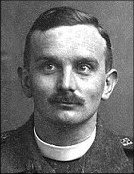 Captain
William Speirs (248378)
Captain
William Speirs (248378)
Rev. William Speirs was appointed as a chaplain to the British Army on the
30th October 1942 (4th Class Royal Army Chaplains’ Dept.). In Normandy he
was always close to the men in action and was always on hand to help the
wounded men in the front line.
In February 1945 during Operation Veritable he was wounded at Cleve in the Reichswald Forest
during heavy enemy shelling.
After recovering back at home in Scotland he eventually was posted to Italy
at the end of the war.
Click here or his adjacent photo to
read his story
List of Wounded and
Sick Officers (1st Battalion Worcestershire Regiment)
During the N. W. Europe campaign 1944-45 there was a total of 52 officer
who were wounded or sick, off these 4 officers were wounded twice. There
were 4 officers who later died of their wounds and a further 2 were
later killed in action. The names highlighted in
RED returned to active service after treatment.
| Surname | Forename/s | Rank | Date Wounded | Type of Wound | Location |
| Allum | John Patrick | Lieut. | 19/08/1944 | Evacuated to hospital | Berjou |
| Badderley | K. W. | 2/Lieut. | 03/08/1944 | wounded - evacuated 04/08/1944 | Cahagnes |
| Bagley | Brian | 2/Lieut. | 12/12/1944 | frost bite in foot | Brunssum |
| Bennett | John M. | Lieut. | 14/08/1944 | stomach wound | Chateau de Fontaine |
| Broome | William Harry | A/Major | 29/09/1944 | 88 shell - Died of wounds 30/09/1944 | Randwijk |
| Brown | R. | Lieut. | 16/04/1945 | Baumeweg | |
| Brygider | Adam | Lieut. | 29/06/1944 | heel blown off | Mouen |
| Clarke | B. T. S. | Major | 04/11/1944 | Mook | |
| Coulcher | Frederick Thomas | A/Capt. | 17/12/1944 (illness) |
evacuated from Brunssum to Brugge Hospital but died on the 30/12/1944 (appendicitis) | Brugge Hospital |
| Crossingham | Leslie Albert | 2/Lieut. | 17/02/1945 | body wound (minor) | Rosenhof |
| Davies | John Edward Oliver | Lieut. | 23/09/1944 | bayonet wound left knee | Valburg, Elst |
| Duff-Chalmers | Robert | Capt. | 09/04/1945 | leg wound by shrapnel | Haselunne |
| Durrant | Leonard Stuart | Capt. | 30/07/1944 | evacuated sick | La Paumerie |
| Eberstadt (Everitt) | Walter Albert | Lieut. | 09/08/1944 | machine gun wounds | La Variniere |
| Elder | Bryan Norman Rawnsley | A/Major | 14/04/1945 | right leg wound | Lethe (Ahlhorn) |
| Figures | C. F. | Lieut. | 27/02/1945 | battle accident | Louisendorf |
| Fiset | Henri Paul | Lieut. | 23/07/1944 | shrapnel wound | Hill 112 |
| Fiset | Henri Paul | Lieut. | 03/09/1944 | motor cycle accident (Broken leg) | Paris |
| Grubb | Alfred Albert | A/Lieut.-Col. | 27/04/1945 | arm wound from shrapnel - evacuated | Bremen |
| Gutch | Archibald John | T/Major | 29/06/1944 | neck wound | Mouen |
| Hall | Peter Geoffrey | Lieut. | 28/06/1944 | left arm | Mouen |
| Hall | Peter Geoffrey | A/Major | 16/04/1945 | eye wound | Baumeweg |
| Harrison | Antony Roy | Lieut.Col. | 05/08/1944 | evacuated sick | Point 361 |
| Henry | Gilbert Frederick Powlett | Lieut. | 09/08/1944 | machine gun wounds | La Varinière |
| Hill | Kenneth Alan | 2/Lieut. | 28/03/1945 | Anholt | |
| Hope-Thomson | Maxwell Richard Julian | Lieut.-Col. | 14/04/1945 | shrapnel Leg wound - evacuated 22/03/1945 | Lethe (Ahlhorn) |
| Hughes | Thomas Frederick | Major | 08/03/1945 | Wardt | |
| Hulme | Patrick Ernest | Lieut. | 28/06/1944 | died of wounds | Cheux |
| Humphreys | Roy | T/Capt. | 27/12/1944 | evacuated | Bunde |
| Hunt | William G. | Lieut. | 06/11/1944 | died of wounds 07/11/1944 | Mook |
| James | Henry Herbert Humphrey | Lieut. | 03/09/1944 | battle accident (leg injury due to mortar fire) | Pressangny L'Orgueilieux |
| Jauncey | Ronald Henry | Lieut. | 17/03/1945 | evacuated | Afferden |
| Jennings | William Fossett | 2/Lieut. | 27/08/1944 | Vernon | |
| Kendall | George Alfred | Lieut. | 26/06/1944 | mounth wound | Cheux |
| Laughton | Clarence William | 2/Lieut. | 06/07/1944 | evacuated to Hospital died | Mouen |
| Leadbeater | Walter Lewin | T/Capt. | 30/11/1944 | foot wound | Rischden |
| Martyn | A. | Major | 02/08/1944 | shrapnel - Admitted to Hospital | Cahagnes |
| Matthews | Henry Reginald | A/Major | 16/08/1944 | gun shot wound | Berjou |
| Miller | Roger Arthur William | T/Capt. | 27/08/1944 | machine gun - died of wounds 28/08/1944 | Route de Tilly (Vernon) |
| Morrison | Howard Stanley Leslie | A/Capt. | 28/07/1944 | evacuated | Jerusalem |
| Newman | H. E. R. | A/Capt. | 09/08/1944 | machine gun wounds | La Variniere |
| Osborne-Smith | Robert Edward | Lieut.-Col. | 18/11/1944 | leg wound | Rischden |
| Ratcliff | Michael James | Capt. | 13/07/1944 | ankle wound - battle accident | Chateau de Fontaine |
| Reinhold | Gordon George | T/Major | 04/05/1945 | perforated ear-drum | Westertimke |
| Rice | R. F. G. | Lieut. | 16/08/1944 | hit by flying stone (land mine) | Berjou |
| Richards | Nicholas Trevor | Lieut. | 29/06/1944 | shrapnel wound | Mouen |
| Richards | Nicholas Trevor | Lieut. | 29/12/1944 | wounded in the foot | Bunde |
| Roose | Peter FitzR. R. | A/Major | 14/07/1944 | knee wound | Chateau de Fontaine |
| Souper | Mowbray Souper | A/Major | 19/08/1944 | Evacuated to R.A.P. | Berjou |
| Speirs | William | Capt. | 16/02/1945 | evacuated (knee injury) | Bedburg |
| Tinkler | Edgar | Capt. | 16/07/1944 | evacuated | Bas de Mouen |
| Trimnell | Frederick Stanthorpe | Lieut. | 27/08/1944 | hit by machine gun | Vernon |
| Tromans | Leslie Attwood | 2/Lieut. | 23/07/1944 | Baron (Hill 112) | |
| Vickers | Arthur William Neville Langston | Lieut.-Col. | 07/02/1945 | admitted to Hospital | Geldrop |
| Wade | Frederick Peter | Lieut. | 22/11/1944 | shrapnel in the arm – evacuated 24/11/1944 | Rischden |
| Wade | Frederick Peter | Lieut. | 27/03/1945 | bullet in the thigh (Spandau) | Vehlingen (Autobahn) |